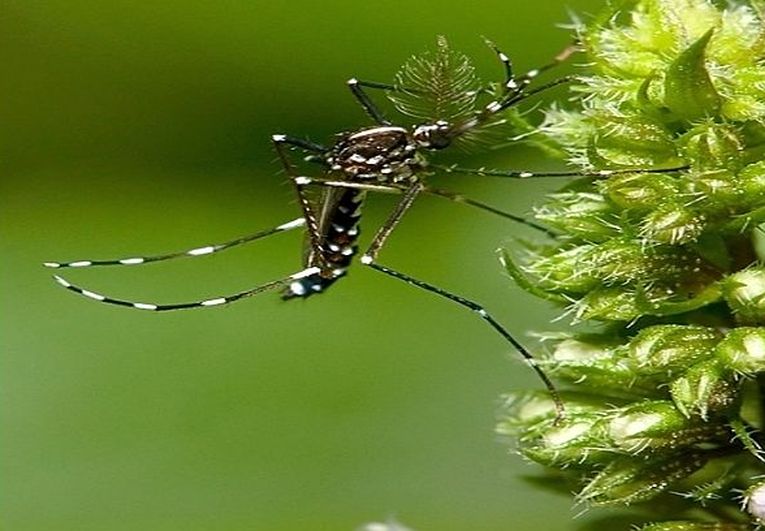The 119th World Mosquito Day, today, heralds no instant solution to the infections carried by our close friends, the females of various mosquito species. Here was the Asian tiger mosquito, pictured above, in case you see one, that has carried tropical dengue and chikununya viruses to Europe, North America and Japan recently. All those years ago, Ronald Ross pointed out that it wasn’t bad air (mal-aria) that killed people. The mosquito, Aedes egypti was responsible (and carried the Plasmodium parasite instead.) However., modern technologies may eventually either sterilise male mosquitoes, protect the female from infection by the Plasmodium, or, most recently, identify viruses such as Zika ( the one that frightens people visiting Rio) using a low-cost, micro DNA sequencer called the MinION!
Researchers from the University of Birmingham, Oxford and local collaborators are travelling around Brazil with a van, although the sequencer fits in a pocket, to map the progress of the deadly disease (It affects newborn children with severe microcephaly and others with a nervous condition, Guillain-Barrà © syndrome.) Viruses such as this change continually to adapt to species and conditions they live in. Sequencing their DNA as they change gives scientists a tool with which to combat that change or the virus reproduction itself. Dengue fever and Chikununya viruses will be followed
in similar fashion.
The key to miniaturising the sequencer and shortening diagnosis from the week-long processing currently required, is gaining time when medics need to challenge epidemics. Stopping the spread within Brazil, Florida and elsewhere could still save many of us from infection. 1000 people are currently using this device in 34 countries, many of them medically unqualified, because the simple preparation takes only 15 minutes. As a nanopore sensing device, protein and RNA can be analysed as well as DNA itself, from blood, saliva or environmental sampling.
Enough of the ad.(although the product is the only one available!) We need to return to mosquitoes, innocent though they may be. Diagnosing fevers is examined in Genome Medicine (the journal) with Rapid metagenomic identification of viral pathogens in clinical samples by real-time nanopore sequencing analysis. Alexander L. Greninger of the University of California, and many co-workers wrote this paper last year. Plasmodium-like parasites, viruses and bacteria are simply identified in what is essentially MetaPORE
presents any medical worker with real-time tools to confirm the ID of any of these pathogens! What this really means is people can carry out a point-of-care test, relieving all of us of the need for that long diagnostic wait.
Time is obviously of the essence. Health services are now able to quickly act on any suspected outbreaks, as long as the back-up is available for appropriate treatment.
Back on the road with the van, the team from project ZiBRA used the MinION from Oxford Nanopore Technologies. Many mosquito species were identified by entomologists, positive Zika virus samples obtained quickly and correlated with Brazilian samples such as those from the Laboratà ³rio Central de Saà ºde Pà ºblica. To date, it has taken 9 months to identify these samples correctly. We can but hope that these technological advances help first with inhibiting the spread of Zika and other rampant epidemics such as Chikununya in Africa.
It seems we may finally be approaching the end for some pathogens that are carried by the easiest agent for them to use - the cosmopolitan mosquito species. If only we forget to blame less innocent
mosquitoes and use science to counter the more resistant pathogens that are rapidly adapting to new ways to kill us, then perhaps at least malaria could be a disease of the ancients, like so many other past killers.










